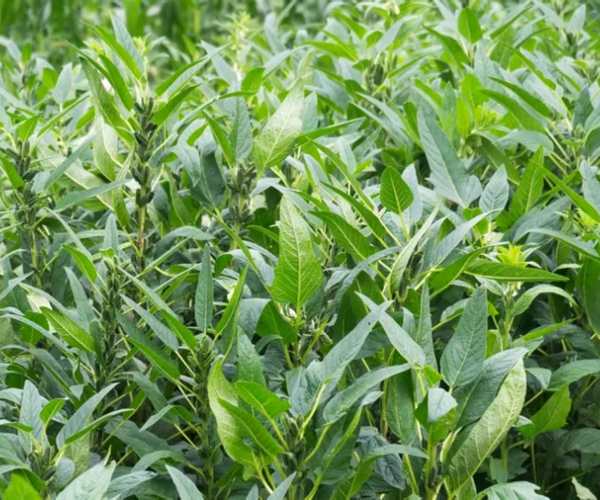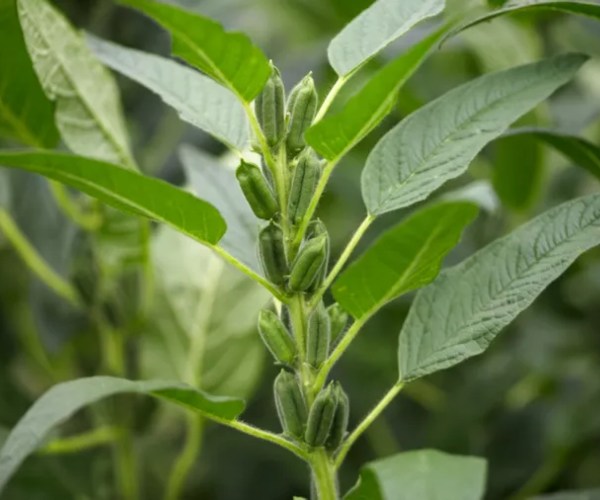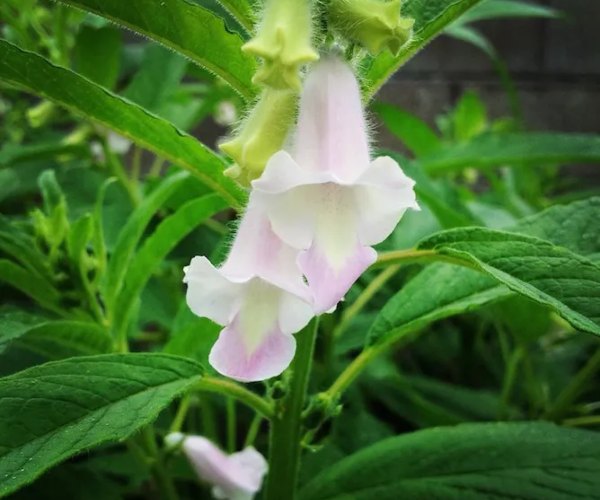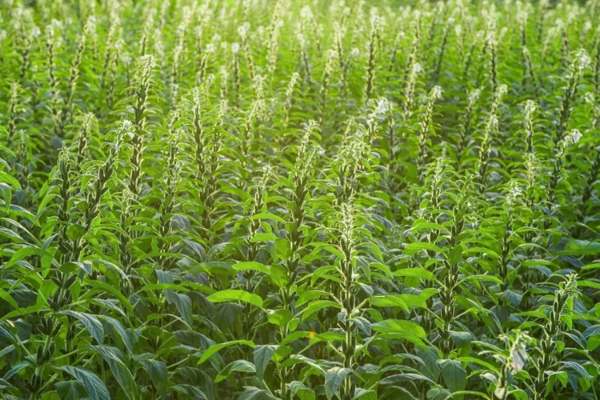Who doesn’t love the sesame plant? These plants give us delicious, popular sesame seeds we find on our bagels, in tahini, and as an essential spice ingredient in many food items. This plant is a tropical perennial that is normally grown annually. To grow this plant, the climate must be very hot, dry conditions with full sun and well-drained soil with neutral pH. If the gardeners do not live in places that do not meet the conditions, it becomes a challenge to grow this plant. So, if you’re willing to grow the sesame plant in your garden, here are some things that you need to do to keep your plant healthy and happy.
Plant Attributes
- Common Name: Sesame Plants
- Botanical Name: Sesamum indicum
- Family: Pedaliaceae
- Plant Type: Annual, perennial
- Mature Size: 2-4 ft. high, 2-3 ft. wide
- Sun Exposure: Full
- Soil Type: Well-drained
- Soil pH: Neutral
- Bloom Time: Summer
- Flower Color: white, blue, purple
- Hardiness Zones: 10-11 (USDA)
- Native Area: Africa, Asia
Sesame Plant Care
Here are some important caring tips for growing a sesame plant:
- It is essential to plant in a well-draining soil that has a medium texture with a neutral pH.
- The planting area should receive the most direct heat and light.
- Water sparingly. Also, be mindful not to be placed with plants irrigated regularly.
- During the growing season, use a nitrogen-rich fertilizer.
Light
Since these plants need enough direct sunlight and warmth, plant them near a stone or brick wall for extra heat production.
Soil
Sesame plants can tolerate different soil conditions but good drainage is essential. A sandy, loamy soil is a great option. Keep in mind that this plant hates standing water, heavy clay soils, or wet soils. It also cannot stand salty soil or salt air.

Water
While it is necessary to water sesame plants for germination and establishing young plants, they do not require much water. Also, we do not recommend situating them near other plants that need to be watered regularly. It is best to give them their own raised bed or section of garden to ensure they get enough moisture and low humidity. That said, planting them near other drought-tolerant plants like lavender, sedums, or thyme is a nice thing to do. Using drip irrigation will only drown the plants.
Also, Read Learn to Build a Water Garden Stocked Full of Fish and Plants!
Temperature and Humidity
The sesame plant is capable of tolerating hot desert conditions. That doesn’t make it a very precious crop for parts of the world facing drought.
Fertilizer
While they do not need enough water, sesame plants do need nitrogen foliar fertilizer throughout their growing season before they start flowering. Alternatively, you could also fertilize the soil before planting.
Pruning
The good news, sesame plants are very low-maintenance and pruning is not an absolute necessity. But if they get too tall or get unwell because of too much watering, you can trim the leaves. That doesn’t mean you can cut all the leaves because it needs enough leaves to prepare food through photosynthesis too. If cutting some leaves is necessary, just snap them off gently and leave the bell-shaped flowers alone.
Sesame are also known to be indeterminate plants, meaning they will bloom and set seed capsules for a long period in the summer. Peak flowering happens in July and early August.
How to Grow Sesame Plants from Seed
You can easily propagate sesame plants by seed. For sowing, you can use recently harvested seeds or just the ones that you can get from the grocery store. Since sesame seeds shouldn’t be directly sown outdoors, here’s how can do the right way indoors:
- Fill containers with moist seed-starting mix four to six weeks before the last frost date.
- Plant the seeds 1/4 inch deep and cover them lightly with soil-less planting mix.
- Keep the mix moist until you see germination in about 10-14 days. Know that these seeds germinate best between the temperatures of 68 and 75 degrees.
- Water weekly until the plants are strong enough to be outdoors.
- After the last frost date, plant the seeds in the garden.
How to Harvest Seeds
Sesame seeds are tiny and drying them is a difficult task. But for storage, they need to be dry so that they don’t rot, which is quite possible because they have high oil content. So, it is essential to dry them out sufficiently on the inside of the seed pod before you harvest them.
Sesame seeds ripen from the bottom of the plant and go upwards. Flowers first bloom on the lower down. As the seed pods start to split, mostly in late summer, cut the stems and let them dry. Hanging them may cause seeds to fall out, but keeping a try or bucket down to catch them will be helpful.

As they dry, the plant’s leaves will darken and the pods will split open. After that, you may tap the stems and pods against the side of a bucket to get the seeds. Some people even toast the dried seeds before storing them, preventing them from spoiling and preserving their flavor.
Potting and Repotting Sesame Plants
It is necessary to keep sesame plants in small pots when growing until the root system is properly developed. If you’re thinking of planting multiple seeds, using an egg carton or a small pot would be the best option. Once the plant is bigger and more mature, you can transfer it to another pot, not more than two inches in diameter than its current pot. If you transfer the plant to a larger pot, it will shock the plant, so do not do it.
Common Pests and Diseases
Some pests attack the sesame plants with the most harmful being green peach aphids and grasshoppers. If left untreated, these insects can damage photosynthesis and kill the plant too. Other less damaging pests include cutworms, caterpillars, and whitefly.

Sesame plants are known for their resilience but they can still face a few problems like root rot. To prevent this from happening, use well-draining soil and a pot with multiple draining holes to let out water and allow the soil to dry quickly. Bacterial leaf spot is also another problem that this plant might suffer. Initially, they appear as water spots on the underside of the leaf and slowly turn dark brown, ultimately spreading to the upper surface.
How to Get Sesame Plants to Bloom
Many people only know about the seeds this plant produces but they also produce beautiful trumpet- or bell-shaped blooms that make any garden beautiful.
Bloom months
This plant starts blooming in the hottest summer months, i.e. August in most growing zones.
How long does the sesame plant bloom?
Once the bloom appears, expect it to flower for the remainder of the season.
What do sesame flowers look and smell like?
As mentioned above, the bloom of the sesame plant is tubular and can be in a variety of colors like purple, rose, blue, or white.
How to get more blooms
Providing your sesame plant with full sunlight is the main way to encourage more blooms. Adequate spacing to give more air around it also helps.
Caring for sesame plants after they bloom
The peak time for sesame to bloom is late summer in many areas. Keep caring for it in the same way like keeping it standing moisture free and providing it enough good sunlight. You can also harvest the seeds while the plant is flowering and produce more pods.
Deadheading sesame plant
If you want a sesame plant as a pollinator, you can deadhead flowers before letting the blooms turn into seed. If you’re growing to harvest the seeds, deadheading is not necessary. Leave the blooms alone until grooved seedpods develop. Once matured, the pods will burst open and spill the seeds.
Common Problems with Sesame Plants
The most challenging things for growing sesame plants are excessive moisture and extreme humidity. To avoid these issues from happening, select your planting location where the plant can stay warm and dry during its entire growing season.
FAQs
Q: How long can sesame plants live?
A: Sesame plants are perennials, meaning they can live two years or more when planted in the zones where they thrive. If planted outside a tropical zone, they may be thought of more as an annual and will not live after the frost sets in.
Q: Where should I plant my sesame outside?
A: Plant sesame in an area that receives direct, full sunlight for optimal growth. Allow for adequate spacing among other plants for good airflow.
Q: Can we grow sesame plants indoors?
A: Sesame plants like lots of light and heat, so they usually will not fare as well indoors. This being said, if you’re able to provide the plant the light and warmth it needs indoors, it may still do well.
Also, Read A Complete Guide to Grow and Care for Hens and Chicks Plants
